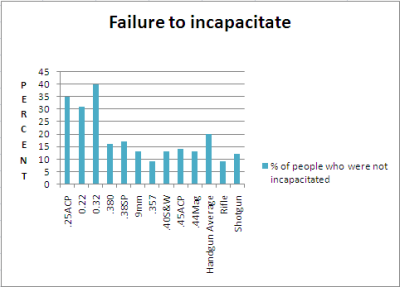Penetration vs Expansion
Good morning folks,
Just joined TFL and find it very interesting. I'm a long time shooter, hunter, combat vet, hand loader. I've been on other forums and found some of them to be loaded with never-been-in-combat experts who are certain they will react positively in a SD situation with the associated huge adrenalin dump, tunnel vision, etc. Some people out there are really scary and not helping deflect the present anti-gun rhetoric. Some are "trollers" for sure but the internet and Youtube have created a lot of self-proclaimed experts. Some are very credible, some not so much.
That said, the TFL forums I have visited so far are very good, very interesting and there appears to be a fair amount of courtesy for the opinion of others.
In regards to the conversation concerning penetration vs expansion, I am certainly in agreement that one bullet cannot do it all and certain amount of penetration is required to stop a BG. Personally, for me, the bigger the handgun bullet the better and 12" to 15" of penetration with an expanding bullet (Critical Duty, HST, etc) is probably quite acceptable. I'm in favor of the big hole and a big "energy dump". After having been in the jungle, I've seen a person keep going after being hit in the torso. In many case, initial pain was not an issue because the high-power non-expanding rifle bullet zipped right through without the attendant organ shock of an expanding style hunting bullet that dumps a tremendous amount of energy before it exits. As mentioned above, the mere fact of knowing you've been shot is enough to stop many people...call it "psychological shock value". But the body seems to go into almost instant shock, numbing the initial pain, so hitting a vital organ causing massive blood loss (oxygen deprivation to the brain) is important and most vital torso organs are within a few inches of the skin so the bigger the hole, the more chance you have to induce massive blood loss...especially with multiple hits.
I carry a G23 w/night sights and my house gun is a Taurus P1911 with a 4 1/2 lb trigger and night sights. I also have a Taurus 99 9MM and a Ruger MKII with a bull barrel. I practice with all of them with emphasis on the G23 and 1911. I'm not a bullseye shooter but I'm fairly decent at center-mass. I hope I never have to do a Zimmerman but I do practice turning the gun immediately upon clearing the holster and getting the first shot off from slightly above waist level just in case the BG is "right there" because, in my mind, that's the very worst case scenario...other than taking a hit.
Anyway, just wanted to say "Hi" and my initial impression is this will be a fun informative forum. Jim
Good morning folks,
Just joined TFL and find it very interesting. I'm a long time shooter, hunter, combat vet, hand loader. I've been on other forums and found some of them to be loaded with never-been-in-combat experts who are certain they will react positively in a SD situation with the associated huge adrenalin dump, tunnel vision, etc. Some people out there are really scary and not helping deflect the present anti-gun rhetoric. Some are "trollers" for sure but the internet and Youtube have created a lot of self-proclaimed experts. Some are very credible, some not so much.
That said, the TFL forums I have visited so far are very good, very interesting and there appears to be a fair amount of courtesy for the opinion of others.
In regards to the conversation concerning penetration vs expansion, I am certainly in agreement that one bullet cannot do it all and certain amount of penetration is required to stop a BG. Personally, for me, the bigger the handgun bullet the better and 12" to 15" of penetration with an expanding bullet (Critical Duty, HST, etc) is probably quite acceptable. I'm in favor of the big hole and a big "energy dump". After having been in the jungle, I've seen a person keep going after being hit in the torso. In many case, initial pain was not an issue because the high-power non-expanding rifle bullet zipped right through without the attendant organ shock of an expanding style hunting bullet that dumps a tremendous amount of energy before it exits. As mentioned above, the mere fact of knowing you've been shot is enough to stop many people...call it "psychological shock value". But the body seems to go into almost instant shock, numbing the initial pain, so hitting a vital organ causing massive blood loss (oxygen deprivation to the brain) is important and most vital torso organs are within a few inches of the skin so the bigger the hole, the more chance you have to induce massive blood loss...especially with multiple hits.
I carry a G23 w/night sights and my house gun is a Taurus P1911 with a 4 1/2 lb trigger and night sights. I also have a Taurus 99 9MM and a Ruger MKII with a bull barrel. I practice with all of them with emphasis on the G23 and 1911. I'm not a bullseye shooter but I'm fairly decent at center-mass. I hope I never have to do a Zimmerman but I do practice turning the gun immediately upon clearing the holster and getting the first shot off from slightly above waist level just in case the BG is "right there" because, in my mind, that's the very worst case scenario...other than taking a hit.
Anyway, just wanted to say "Hi" and my initial impression is this will be a fun informative forum. Jim




